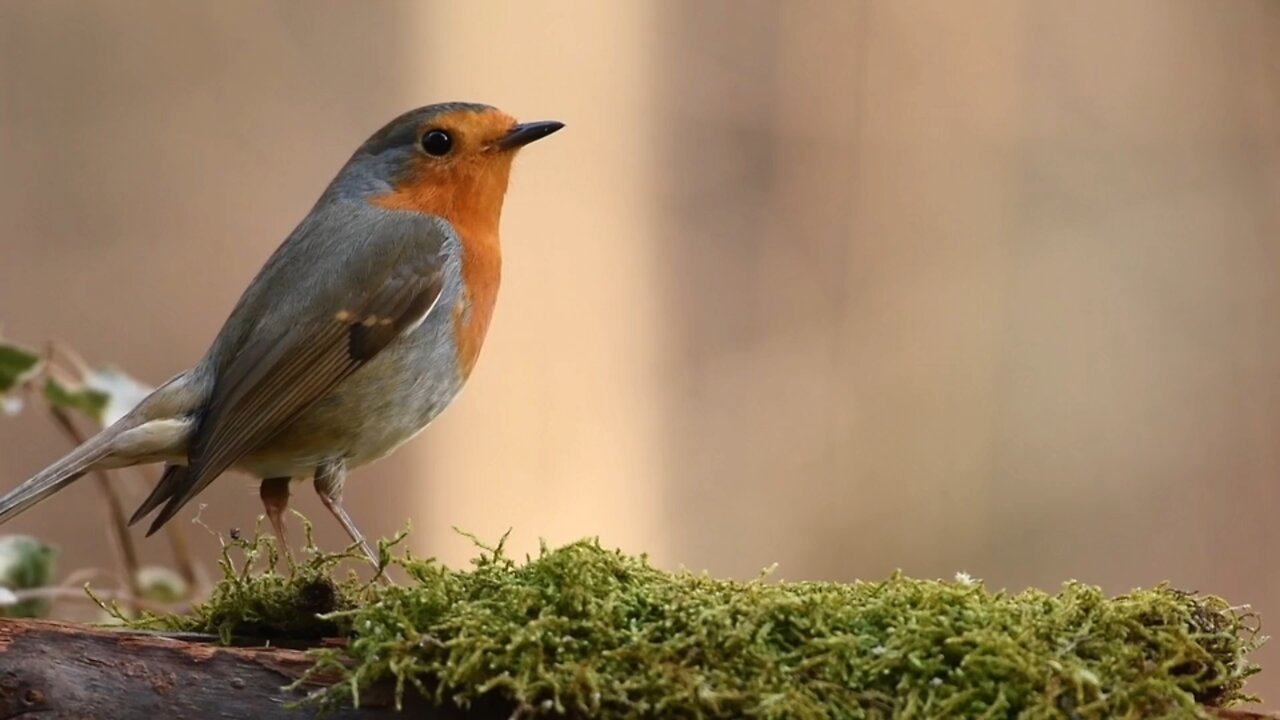Premium Only Content

"The European Robin: A Tale of Song and Survival"
The European robin (*Erithacus rubecula*) is a small, insectivorous songbird native to Europe, western Asia, and parts of North Africa. Known for its distinctive orange-red breast and face, the robin is a familiar and beloved bird across its range, often associated with winter and Christmas in European culture.
### Key Features:
- **Size**: The European robin is small, measuring about 12.5–14 cm (5–5.5 inches) in length, with a wingspan of 20–22 cm (8–9 inches).
- **Plumage**: Its most striking feature is the bright orange-red breast, extending up to the face and throat. The rest of the body is mainly brown with a white belly.
- **Song**: The robin's song is a sweet, warbling melody, which is often heard year-round but is particularly prominent in the spring and autumn.
### Behavior and Habitat:
- **Habitat**: Robins are highly adaptable and can be found in a variety of habitats, including woodlands, gardens, parks, and hedgerows. They are particularly fond of areas with dense undergrowth where they can forage for insects and worms.
- **Behavior**: European robins are territorial and can be quite aggressive towards intruders, especially during the breeding season. They are also known for their curious and bold nature, often approaching humans closely, especially when food is involved.
- **Diet**: Their diet primarily consists of insects, worms, spiders, and other invertebrates. In winter, they may also eat berries and seeds when insect prey is scarce.
### Cultural Significance:
- The European robin is a symbol of Christmas in many European countries, often featured on holiday cards and decorations.
- It has a strong presence in folklore and literature, frequently depicted as a friendly, helpful bird.
- The robin is the national bird of the United Kingdom.
### Breeding:
- Robins typically breed from April to June, with females laying 4-6 eggs per clutch. The nest is usually built in a hidden, sheltered location, such as a tree hole, wall crevice, or among dense vegetation.
- Both parents take part in feeding the chicks, which fledge around 14 days after hatching.
### Conservation:
- The European robin is currently listed as a species of Least Concern by the IUCN, meaning it is not at immediate risk of population decline. Its adaptability and widespread presence help ensure its survival across its range.
This bird's charming appearance and melodious song make it a favorite among birdwatchers and nature enthusiasts across Europe.
-
 31:08
31:08
mizery
17 days agoI Asked 100 Pros To Help Me Go Pro...
13 -
 LIVE
LIVE
FyrBorne
12 hours ago🔴Battlefield 6 Live M&K Gameplay: A Return to Form for This Former Giant
288 watching -
 3:40
3:40
Danny Rayes
2 days agoInfluencers Are Going Broke. What Happened?
12 -
 11:08
11:08
It’s the Final Round
15 hours ago $2.30 earned💰NFL Week 6 Best Bets🔥Player Prop Picks, Parlays, Predictions FREE Today October 12th
11.3K4 -
 10:28
10:28
nospeedlimitgermany
2 days ago $0.01 earnedMercedes-Benz C 63 AMG *Edition 507* V8 W204 | 507 PS | Top Speed German Autobahn No Speed Limit POV
361 -
 LIVE
LIVE
Reidboyy
1 day ago $0.26 earnedCamo King Grinds 100% Completion for Battlefield 6 *SECRET* Mastery Camo (All Badges + Camos 100%)
64 watching -
 1:03:01
1:03:01
The Heidi St. John Podcast
1 day agoFan Mail Friday: Marriage Q&A — Real Talk From Kona (Part 2)
2.39K -
 LIVE
LIVE
The Pete Santilli Show
2 days ago📺The Pete Santilli Show LIVE Feed 📺 ⚡️ Live Broadcasts Mon-Fri ▶️ 4pm ▶️ 8pm EST
85 watching -
 19:57
19:57
The Bryce Eddy Show
21 hours agoNate Lundquist: Lifewise Academy
1.94K -

DynastyXL
3 hours ago👻 DYNASTYXL Presents: “What’s Your Favourite Scary POI?”
3.8K